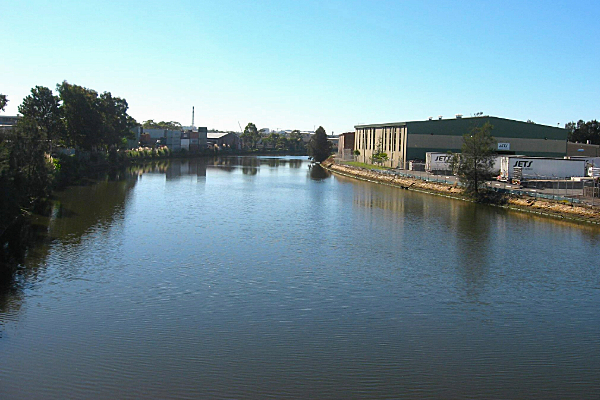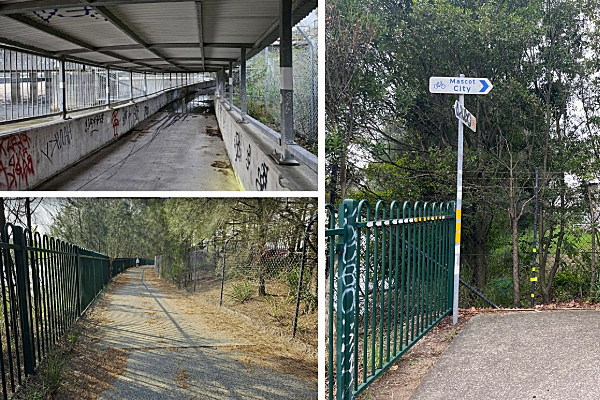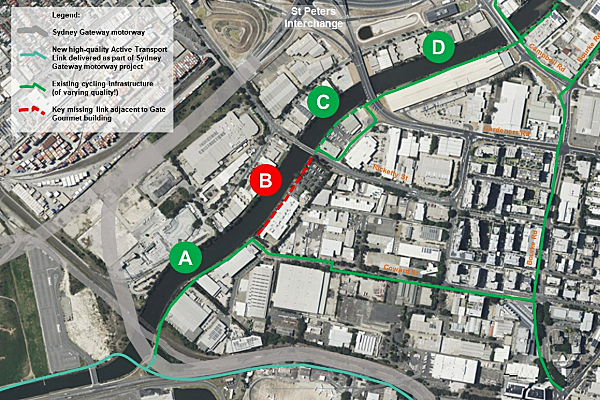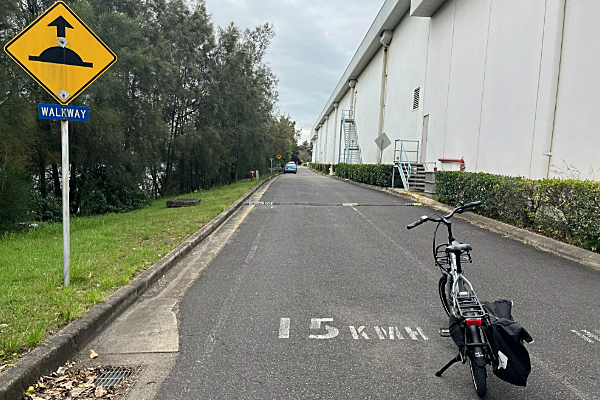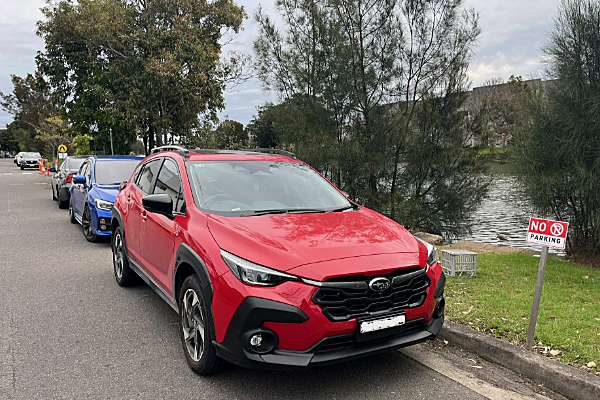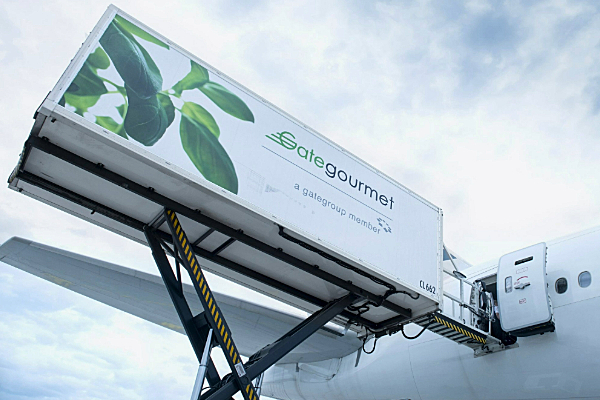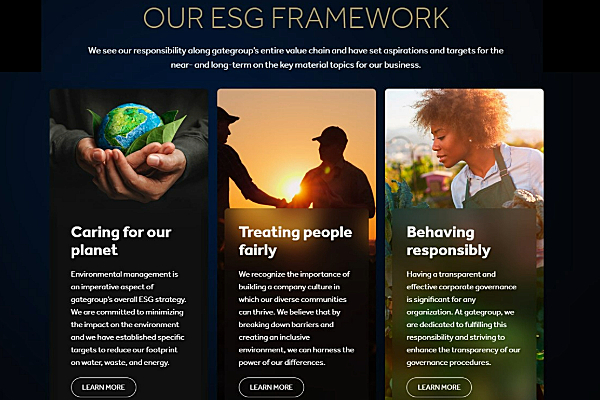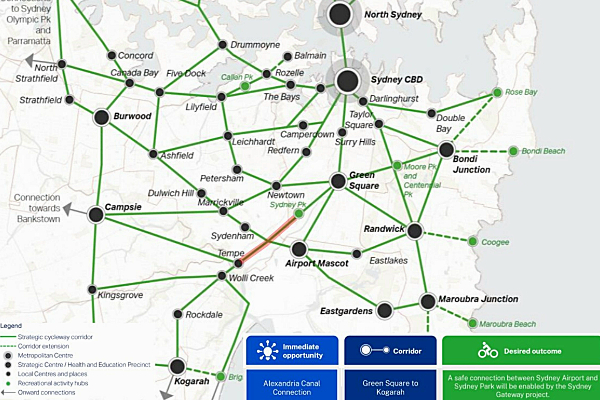… due to one short missing link
It is very disappointing that Transport for NSW has decided not to proceed with a critical section of the Alexandra Canal cycleway between Coward Street and Campbell Road.
Transport for NSW claims that much effort has gone into exploring the feasibility of each section of the shared path. But apparently ‘investigations and design work to date have identified stakeholder and environmental impacts that have led the project’s estimated costs and impacts to be significantly more than originally forecast. As a result, the project will not be completing the environmental approvals at this time’.
And so the project has been indefinitely postponed.
This was meant to be an easy win
A short length of path is all that is needed to fill a missing link and unlock a safe regional corridor. The route is a priority project in a raft of planning and transport strategies. It has huge community support. It has no impact on the road network. It doesn’t require changes to streets outside houses and businesses – with all the delicate negotiations such changes require.
The bicycle community is very frustrated.
If Transport for NSW fails to get this strategic cycleway across the line, what does this mean for the rest of its Strategic Cycleway Corridor program?
The advocacy team at Bicycle NSW has dug in to the issues to understand if there may be a way forward.
Are there options that haven’t been considered? Have the right people been asked? And what are the next steps?
Connecting Botany Bay with Sydney Harbour – for boats
Alexandra Canal was conceived as part of a grand plan to create a European system of canals across the city. Construction got underway during the 1880s depression, but it was abandoned before completion as road and rail transport became cheaper and faster than water transport. In addition, the canal was only 6 foot deep, and siltation was a major issue. Larger boats couldn’t navigate.
Four-and-a-half kilometres in length, the Alexandra Canal is the longest stretch of constructed water’s edge in the city. (Image: Friends of Alexandra Canal)
Construction terminated just south of what is now Huntley Street – quite a long way from Sydney Harbour!
The dream of an active transport corridor
It’s not surprising that walkers and bike riders have long eyed up this wide and open corridor as an ideal route to travel across the south of the city. Next to water and away from hostile arterial roads, a canal side path would offer a direct, attractive and comfortable trip between Inner West and Bayside suburbs and central Sydney.
Unfortunately, the industrial development that filled the banks on either side of the canal did not leave space for public paths or accessible green space.
These days the canal is a polluted but tantalising corridor of water hidden from view behind rows of factories and warehouses (Image: Friends of Alexandra Canal)
Despite the challenges, there has been plenty of progress towards a continuous path.
Undeterred by issues with contamination and land ownership, idealistic local and state governments have dreamed big.
For over 20 years, local planning provisions, supported by an array of masterplans for the area, have required that any new buildings on both banks of the canal have a 10m setback to support walking, cycling and recreational activities for the community. As warehouses were renewed, sections of path have been created.
A map showing the Alexandra Canal and the active transport infrastructure that has been delivered along its banks. The missing link is shown as a red dotted line. (Image: SixMaps / Bicycle NSW)
There is now only one small inaccessible segment. This is alongside the warehouse and car park used by airline catering company Gate Gourmet.
Before we get to that, let’s explore the open sections of path.
The excellent Sydney Gateway facilities
The most exciting project in recent years is the Active Transport Link constructed as part of the Sydney Gateway motorway, a major new road connecting Westconnex at St Peters Interchange with the two terminals at Sydney Airport.
Bicycle NSW and BUG members worked hard, alongside Bayside Council, Inner West Council and City of Sydney, to ensure that the Gateway project delivered really positive outcomes for active transport.
The huge advocacy effort resulted in an amazing new shared path along the north side of the Alexandra Canal, an elegant bridge over the canal and a connection to the Domestic Terminal. Find out more about the ATL here.
The new ATL features Connecting with Country artwork, handrails with integral lighting and great views over the canal to the airport. (Image: Transport for NSW)
Heading north from the airport
An existing shared path connects the new ATL with Coward Street (A on the map below). The path needs upgrading with lighting and drainage – and more regular maintenance! But it is used by over 500 bike riders a day.
The well-used path between the Sydney Gateway ATL and Coward Street would be improved with drainage repairs, good lighting and regular sweeping. It terminates abruptly at the fence with the Gate Gourmet site (Image: BIKEast)
The waterside path stops dead at the security fence around the Gate Gourmet site.
Path users are directed right onto Coward Street. From here, bike riders have to navigate a substandard shared path towards Mascot town centre, dodging large trucks turning into industrial premises, before turning north along the Bourke Road cycleway.
This route is indirect, unsafe and very complex to improve.
A close up of the Alexandra Canal between the Sydney Gateway to Campbell Road showing existing sections of path and clearly highlighting the missing Section B (Image: SixMaps / Bicycle NSW)
And when approaching from the city?
Riders heading south from Campbell Street can access a long new stretch of waterside path adjacent to the new Southend Lane warehouse complex (D). This was enabled by the new setback requirements in the City of Sydney DCP.
New underpasses of Cambell Road and Gardeners Road were built when these roads were widened to feed the St Peters Interchange.
South of Gardeners Road (C), a stub of path shows where route will shortly continue along the water’s edge once the old warehouses are replaced. Redevelopment is imminent, and the new buildings will be set back to accommodate the path.
In the meantime, riders can safely use low-traffic Venice Street to reach Ricketty Street. Here, there is a rough goat track under Ricketty Street bridge. This could be upgraded to a proper shared path.
Travelling south from Campbell Road and reasonable cycleway has gradually been created as far as Ricketty Street (Images: Bicycle NSW)
And then the route again stops dead at the fenced Gate Gourmet site.
There is no easy way to continue south, other than using dangerous streets through the industrial sites to get to Coward Street.
So why can’t the canalside path be completed?
Transport for NSW provided a long list of reasons why the project team has given up on the missing link adjacent to the Gate Gourmet site:
- The fenced Gate Gourmet site butts right up to the edge of the water and there is no space for a shared path.
- Although the actual warehouse building is set back about 8m, this land is occupied by a private access road servicing the staff carpark.
- Staff enter the site from Coward Street and leave at Ricketty Street and Gate Gourmet do not want to change the circulation to free up the road corridor.
- The site is used to produce meals for multiple airlines so security is very tight and can’t be compromised.
- Any solution would therefore require building out over the canal beyond the existing Gate Gourmet fence.
- Several engineering solutions for this were examined but none were feasible. The sandstone walls of the canal are heritage-listed and can’t be changed. The sediment is incredibly contaminated and can’t be disturbed for foundations. A cantilevered boardwalk would be prohibitively expensive and requires building structures within Gate Gourmet’s site.
- Any land acquisition would be very expensive.
- Any changes to Gate Gourmet’s site or fencing would trigger a huge ‘business disturbance compensation’ payout to cover all possible business losses.
And so, after 2 years of feasibility studies, the project has ground to a halt….
But have all avenues really been exhausted?
Bicycle NSW agrees that boardwalks and cantilevered structures are unnecessary. There is 8m of level land between the warehouse building and the canal edge. A clear corridor of open space to play with.
The 8m corridor of land on Gate Gourmet’s site between the warehouse and the canal is occupied by an access road for the car park (Image: Bicycle NSW)
A site visit found that there is no visible security. Visitors can freely access the service road with no check-in. This was a surprise as security was given as a major reason for not touching Gate Gourmet’s site.
There is a very low speed limit and very little traffic on this road.
Of course, a very simple option would be to let bike riders share the existing service road with cars. Perhaps fences at each end could be configured to ensure there is no possibility of accessing the buildings.
Alternatively, there appears to be plenty of room for a separated fenced cycleway. One side of the road is used for car parking, despite signs saying no parking – this space would accommodate a cycleway.
Looking south along the access road, where cars are allowed to park despite the signs. The importance of keeping the full width of the road clear for emergency vehicles must be questioned? (Image: Bicycle NSW)
Could the site circulation be changes, so staff don’t use the service road to reach the car park? They could enter and leave via the Ricketty Street gate. This would free up the service road for other uses.
Transport for NSW claimed that this would have ‘unacceptable impacts on the transport network’. But the project team admitted that no traffic studies were actually undertaken.
The ‘business disturbance compensation’ was deemed too high. But how has this been calculated? Transport for NSW acknowledged that senior gategroup staff had not been consulted about compensation. Or asked if they would consider changing the carpark access and reorganising site circulation.
Can Gate Gourmet help?
Gate Gourmet is a global food and hospitality company and the world’s leading inflight caterer. Headquartered in Zurich, Switzerland, gategroup employs over 38,000 people and operates in 200 locations across all continents.
In 2023, Gate Gourmet prepared approximately 590 million meals for airline passengers on six continents (Image: Swiss Air)
As a major listed company, gategroup makes strong commitments to sustainability that are clearly stated on its website.
The impressive Environment, Social and Governance (ESG) framework includes a goal to get to Net Zero by 2050. Although Scope 3 emissions connected with employee transport are not included in the targets yet, this is very likely to change. Australia is moving towards mandatory climate-related disclosure, with the largest businesses required to disclose Scope 3 emissions in reports from 1st July 2024.
There is also a pledge in the ESG framework “to create a positive social impact in the communities where our company operates. We believe that by giving back and supporting local initiatives, our organization can make a difference in the lives of those around us and contribute to a more equitable society.”
The gategroup website sets out an ambitious ESG framework (Image: gategroup)
A shared path for walking and cycling, that fills a critical gap in the local and regional active transport network, would contribute to multiple ESG goals.
A safe cycling route would enable and encourage employees to commute without a car. It would support staff use of public transport with easy ‘last-mile’ trips to train stations and bus stops. Any car parking spaces lost to create the path may not be missed!
And the local community would benefit hugely from a safe and attractive route between Coward Street and Campbell Road.
Therefore, the global leadership team at Gate Gourmet might be very keen to explore reconfiguring vehicle circulation and parking on site to free up a 3m strip of land for a significant cycleway.
However, Transport for NSW admitted that only the local operations team had been consulted about the project.
The Alexandra Canal cycleway has clear strategic alignment
Recent NSW Government strategies have built a strong mandate for completing the Alexandra Canal cycleway.
The Strategic Cycleway Corridors are a blueprint for developing 1,000 kilometres of cycleways across NSW. The network for Eastern Harbour City was released in April 2022 and identified 30 corridors.
Transport for NSW identified 5 ‘immediate opportunities’ that fill important gaps in the network. These are high priority projects and include the Alexandra Canal between Tempe and Sydney Park (Image: Transport for NSW)
Sydney Green Grid, developed by the NSW Government Architect in 2017 and reflected in the district and region plans, proposed an interconnecting network of open spaces to support walking and cycling. The Alexandra Canal was listed as a Priority Project Opportunity.
The Sydney Gateway Active Transport Network Strategy was developed in 2022 to inform how the Sydney Gateway project could contribute to improved active transport connections. A shared path along Alexandra Canal between Coward Street and Campbell Road was nominated as the most important and feasible project.
As a result, the NSW Government announced funding to design the shared path in December 2022.
What other options are there for the cycleway?
In the future, Gate Gourmet may move elsewhere. If the new occupant of the site redevelops, the Conditions of Consent will require a setback to accommodate a shared path.
Meanwhile, Transport for NSW is again investigating the possibility for a cycleway through the industrial area of Mascot. But there are complex landownership issues and very dangerous traffic movements. It will be extremely difficult to achieve a good outcome.
So – let’s ask the eco-conscious senior gategroup managers in Switzerland if they will support the simple option to deliver the missing link!
Before you go!
Would you like to support Bicycle NSW’s advocacy work to make NSW better for bike riding? Please consider signing up as a Member today!
And if you are not ready to join the Bicycle NSW family, then we would love you to Buy Us a Coffee (or three!)


